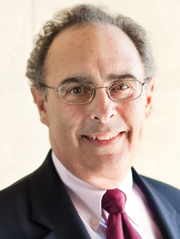 On Erev Shabbat, Shabbat Shuva, Sept. 6, Rabbi Art Nemitoff of B’nai Jehudah addressed our combined congregations from the Beth Torah pulpit. It was an exciting evening.
On Erev Shabbat, Shabbat Shuva, Sept. 6, Rabbi Art Nemitoff of B’nai Jehudah addressed our combined congregations from the Beth Torah pulpit. It was an exciting evening.
Rabbi Nemitoff addressed an important challenge: combining our strengths to program more effectively between the two congregations. While Rabbi Nemitoff was not specific, I imagine these are the kinds of programs he may have meant: youth activities for all ages, women’s activities and men’s activities in order to increase the pool of eligible participants; expanding the scope of education and creating a larger variety of activities; increasing the variety of worship to appeal to different tastes; combine worship for the occasions when a very limited number of people attend, like Sukkot morning.
There are also areas that we ought not combine. Our worship styles differ markedly, and diversity is a wonderful part of having a large community. We ought not aim at a monoculture for worship. Varieties of educational and religious experiences increase the interest in Judaism. We already know that combining certain activities actually decreases the participation, and we have to avoid those areas. We want to increase our activities, possibilities and the quality of our Jewish life.
Consider that the greatest educational and communication tool to be invented in the last 500 years has just been invented: digital communication, including cell phones, the Internet, Twitter, etc. Among the results is a greater focus on individuals forming their own constantly changing communities. But it has also opened up possibilities for community formation that have united people all over the world who choose to opt in to a particular community, sometimes of their own creation. Meanwhile, this technology has spread so rapidly that it’s extremely difficult to stay ahead of the cultural changes taking place. We lack the resources to stay ahead of new developments, and we don’t have the staffing to keep up with new cultural trends.
At Rosh Hashanah I discussed the new directions for congregational life: Community building through taking care of others (Caring Community Team — CCT), changing to digital education, and creating a new life stage for over 50-year-olds. All of these require leadership to step forward and make them happen, both with personal volunteer energy and the donation of new funds. These are challenges that require innovation, but they also require people who want the community to continue to meet the needs of Jews in new, innovative and relevant ways. We need you to be involved at all levels. The success of community life depends on the personal involvement of each community member at whatever level s/he finds most possible. The vitality of our community hangs in the balance.
Rabbi Nemitoff pointed to an essential fact: we are better off working together than working separately. Not in everything: we need different worship styles to appeal to multiple communities within the larger Jewish community. But with the digital revolution has come such a variety of possibilities that we need to work together to appeal to everyone. This is our challenge, and our opportunity.


